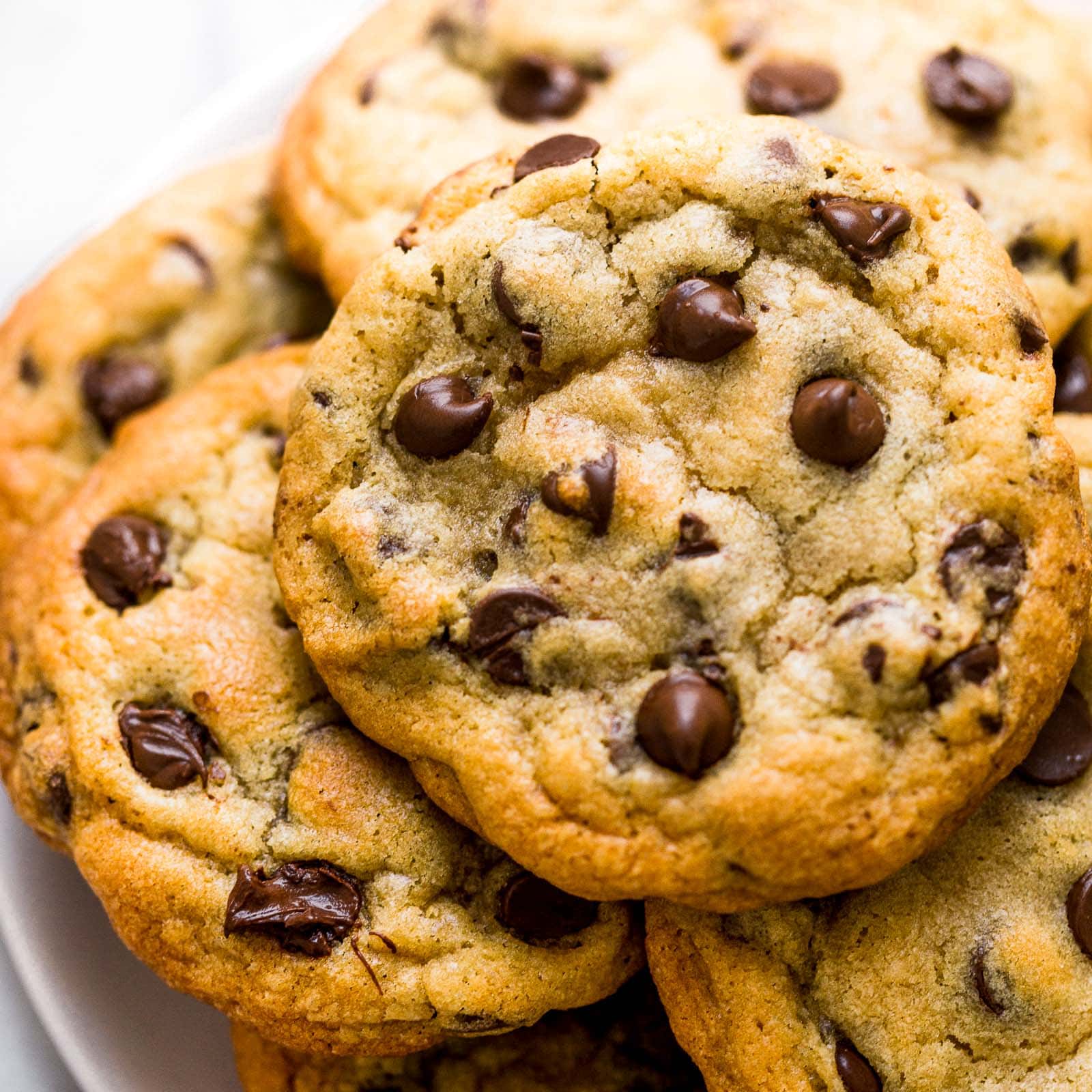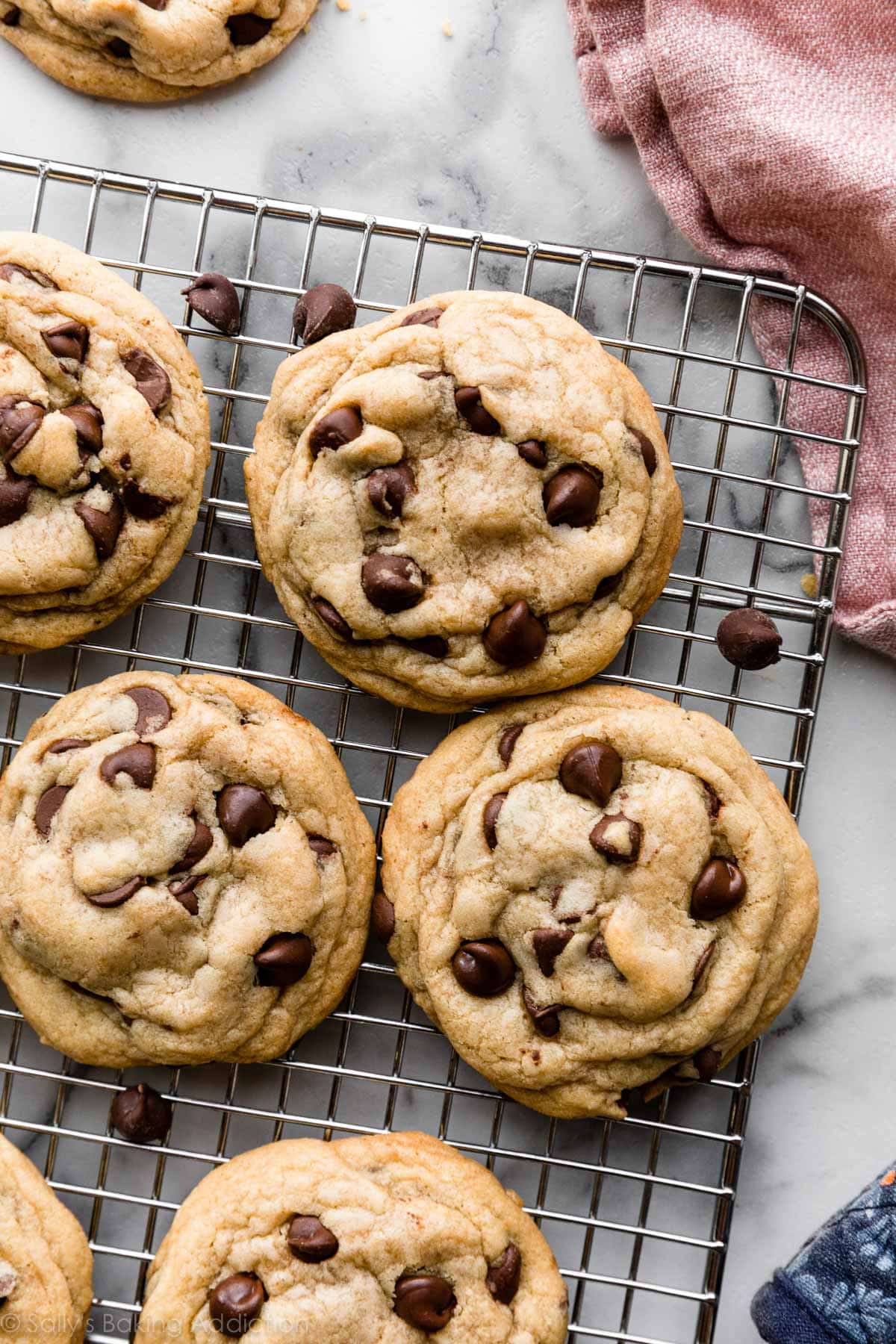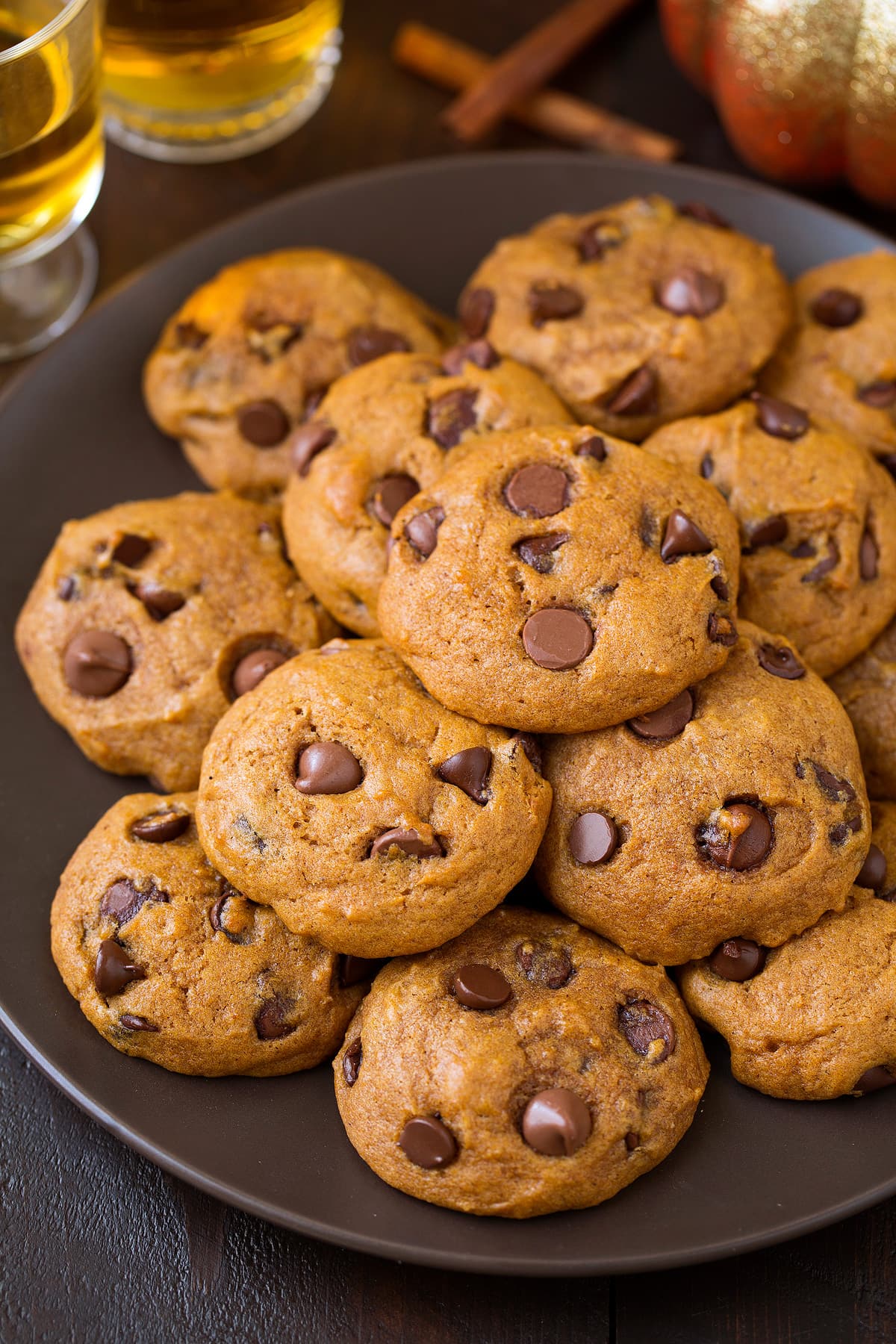There's something truly comforting, you know, about the idea of a "cookie baugh." It brings to mind, in a way, those wonderful moments of warmth and simple pleasure, whether we're talking about the delicious treats that fill our kitchens with amazing smells or, perhaps, the tiny bits of information that help make our online experiences a little smoother. This piece, you see, is all about exploring the different facets of "cookie baugh," from the kind you can bake and share with others to the digital kind that helps websites remember your preferences. It's a look at how these seemingly different things, actually, play a part in our daily lives, making things just a little bit better, or at least, a little more convenient for us.
We often think of cookies as something you eat, something sweet and delightful, and that's certainly a big part of what we'll be exploring. Imagine, if you will, the sheer joy of pulling a tray of fresh, warm cookies from the oven, the kind that are just right, maybe a little soft, maybe a little chewy, depending on what you like. These are the kinds of treats that, honestly, bring people together, creating shared memories around a table. But, you know, there's another side to this "cookie baugh" story, one that lives on your computer or phone, quietly doing its job in the background as you browse the internet. It’s a pretty fascinating duality, isn’t it?
So, as we go along, we'll try to unpack what makes a cookie, in both its forms, so important. We'll look at some really easy recipes that are like a present you keep getting, and we'll also take a peek at how those digital files work to keep your online world running. It’s all part of the big picture of "cookie baugh," a concept that, in some respects, is much broader than you might first think. We're going to talk about the tricks that make a cookie soft or chewy, and also, how you can manage the digital ones that websites make. It's all about understanding these little helpers that are, actually, a pretty big part of our everyday.
- How Are Joan And Chock Doing
- Ellen Degeneres Lives Where
- Doctor Odyssey Tristan
- Abby And Brittany Hensel Died Today
- Florida Teens
Table of Contents
- The Wonderful World of Edible Cookies and Cookie Baugh
- What Makes a Cookie Truly Special, a Real Cookie Baugh?
- How Do We Get That Perfect Cookie Baugh Texture?
- Understanding Digital Cookies and Your Cookie Baugh Preferences
- Why Do Websites Use Digital Cookie Baugh?
- Can You Control Your Digital Cookie Baugh?
- Famous Cookie Baugh Creations
- The Compost Cookie Baugh Phenomenon
The Wonderful World of Edible Cookies and Cookie Baugh
When we talk about "cookie baugh" in the kitchen, we’re often thinking about the sheer delight of baking. There are, for instance, these 40 easy Christmas cookie recipes that are, like, the gift that keeps on giving, and they even come with 40 photos to guide you. It’s a rather lovely thought, isn't it, how a simple batch of cookies can bring so much joy, not just when they are first made, but over and over again as they are shared. Then there are, you know, the 50 bar cookie recipes, which include 51 photos, offering a different way to enjoy a sweet treat, often simpler to prepare in larger batches. These kinds of recipes just make it so much easier for anyone to whip up something delicious without too much fuss. It's all about making the baking experience a little more approachable for everyone, which is pretty great, if you ask me.
And, you know, sometimes people need options, especially when it comes to ingredients. That’s where eggless cookie dough recipes come into play, with six photos showing you how it’s done. These recipes, basically, let you enjoy all the cookie energy without needing any eggs, which is super helpful for those with dietary needs or, perhaps, if you just ran out of eggs. Eating better doesn't, actually, have to mean cutting out all the foods you really love. It’s more about finding ways to adjust them so they fit your lifestyle or preferences. So, for those who love their sweet treats but need to avoid eggs, these recipes are, like, a real blessing, allowing everyone to enjoy the simple pleasure of a cookie, which is, honestly, what "cookie baugh" is all about in the kitchen.
What Makes a Cookie Truly Special, a Real Cookie Baugh?
So, what exactly is it that makes a cookie truly stand out? You know, what gives it that special something? It’s not just about the ingredients themselves, but how they come together and, honestly, how they are handled. Many baking tricks, for example, can influence a cookie's softness and chewiness. It’s a bit of a science, really, combined with a lot of love. The ratio of brown sugar to white sugar, for instance, plays a big part in the final texture. Brown sugar, you see, typically has more moisture and a different kind of sweetness, which can lead to a chewier cookie. White sugar, on the other hand, tends to make things a little crisper. So, getting that balance right is, actually, a pretty big deal.
- Alexei Mentzer Judge Judy Grandson
- Hijos Angelina Jolie 2024
- Lola Kelly Ripa Daughter
- Angelina Jolie Halloween
- Camila Cabello Brunette
Then there's the amount of butter or fat you use. More fat can often lead to a softer, richer cookie, while less might make it a bit more crumbly or crisp. It’s all about finding that sweet spot, you know, for the kind of cookie you’re hoping to create. And, of course, the baking time and temperature are absolutely crucial. Baking too long, or at too high a temperature, can dry out your cookies, making them hard instead of tender. Baking for just the right amount of time, at the proper heat, helps them achieve that perfect internal softness while still getting a lovely golden color on the outside. These little adjustments are, in a way, what truly perfects a "cookie baugh," turning a simple mix of ingredients into something truly memorable.
How Do We Get That Perfect Cookie Baugh Texture?
Achieving that ideal texture for your "cookie baugh" often involves a few clever steps. For example, in a bowl, you might combine hazelnuts and reserved crushed cookie wafers, then sprinkle them around the perimeter of a baking dish or ramekins. This kind of layering, you know, can add a wonderful crunch and a different kind of taste to your dessert. It’s about building up flavors and textures, making each bite a little more interesting. And then, there’s the chilling part. To get things just right, you often need to chill for at least 3 hours or, perhaps, up to overnight. This chilling time is, actually, super important because it allows the fats to firm up and the flavors to meld together, which means a better texture and a more developed taste when you finally bake them. It's a step that, honestly, many people might want to skip, but it makes a real difference.
When you're ready to bake, the preparation of your oven and pans is also pretty important. You'd preheat the oven to 400 degrees F, for example. And then, you line two sheet pans with foil, making sure the dull side is facing up. This helps with even baking and, you know, makes cleanup a whole lot easier, which is always a plus. Then, in a medium pot, you might heat butter until it browns, which takes about 15 to 20 minutes. Browning butter, you see, adds a deep, nutty flavor that can really elevate a cookie, giving it a more complex taste than just using plain melted butter. These small, thoughtful actions, basically, contribute to the overall success of your "cookie baugh," ensuring that the final product is as delicious and well-textured as possible. It’s all about those little details, really.
Understanding Digital Cookies and Your Cookie Baugh Preferences
Beyond the delicious baked goods, the term "cookie baugh" also applies to the digital world, referring to small files created by websites you visit. These files are, basically, a kind of data that websites store on your device. They save information about your visit, and by doing so, they make your online experience a bit smoother. For instance, if you've ever logged into a website and it remembered your username, that's often thanks to a cookie. Or, if you've added items to a shopping cart and then left the site, only to find them still there when you return, that’s another example of a cookie at work. They're pretty useful, you know, for remembering little bits of information about you, which helps the website serve you better. It's a way for the site to, kind of, recall who you are and what you were doing.
These digital "cookie baugh" files can, for example, affect how your Google account works with other services and third-party apps. It’s important to know that. If you receive a message indicating that cookies are turned off, you might need to enable them to use your account fully. This is because many online services rely on these small files to function correctly, to keep you logged in, or to remember your settings. The sites you visit create these files, and they hold information about your actions in the browser. They're not, actually, programs that run on your computer; they’re just small pieces of text data. So, while they are, you know, a different kind of "cookie baugh" than the edible ones, they are still about making things work more efficiently for you in their own way.
Why Do Websites Use Digital Cookie Baugh?
So, why do websites bother with these digital "cookie baugh" files anyway? Well, they're pretty useful for a few reasons. They help sites remember you, as we talked about, which means you don't have to, for instance, log in every single time you visit. This makes for a much quicker and, honestly, less annoying experience. They also store data about your browsing actions, which can help websites customize what you see. For example, if you often look at shoes on a shopping site, a cookie might help that site show you more shoe ads or recommendations. It’s all about making your experience more relevant, which can be helpful, or, you know, sometimes a bit too targeted, depending on how you feel about it.
First-party cookies, for instance, are created by the sites you actually visit—meaning, the ones whose addresses appear in your browser's URL bar. These are the ones that, basically, help the site function for you, remembering things like your language preference or items in your cart. Then there are third-party cookies, which are created by other websites, not the one you're directly visiting. These are often used for advertising or tracking across different sites. For example, if a website uses an embedded social media feed, that social media site might place a third-party cookie. Understanding these different types of "cookie baugh" helps you, in a way, grasp how your online data is being used, which is pretty important for anyone who spends time on the internet.
Can You Control Your Digital Cookie Baugh?
The good news is that you absolutely can control your digital "cookie baugh" preferences. You can choose to delete existing cookies, for example, or allow or block all cookies, and even set specific preferences for particular websites. Chrome, for instance, offers these kinds of options regarding cookies. It's really about giving you the power to decide how much information websites can store about your online activity. This is, honestly, a pretty big deal for your privacy. You can go into your browser settings and, you know, decide what works best for you. It’s not always super straightforward to find these settings, but they are there, and they offer a good deal of flexibility.
It's important to note that if you're part of a test group that limits third-party cookies by default, you might have different settings for managing them. This is, you know, something that tech companies sometimes do to test new features or privacy settings. Typically, you'd go into your privacy and security settings and look for options related to third-party cookies. From there, you can choose what you prefer: allowing them, blocking them, or setting exceptions for certain sites. So, yes, you do have a say in how these digital "cookie baugh" files operate on your device, which is, basically, a key part of maintaining some control over your online presence. It’s about being an active participant in your digital life, rather than just letting things happen.
Famous Cookie Baugh Creations
When we think about famous "cookie baugh" creations, certain recipes just stand out, becoming sensations in their own right. One such example is the compost cookie, which was invented by pastry chef Christina Tosi of New York City's Momofuku Milk Bar. This particular cookie has, you know, become an internet sensation, and for good reason. It’s famous for including a mix of unexpected ingredients, often things you might find in a pantry, like pretzels, potato chips, coffee grounds, or even graham crackers. It's a testament to creativity in baking, showing that you can take everyday items and turn them into something truly special and, honestly, quite delicious. It’s a bit of a culinary adventure, if you ask me.
The beauty of the compost cookie, basically, is that the recipe is easy to alter, so you can borrow from the original idea and make it your own. This adaptability is, actually, a big part of its appeal, allowing home bakers to experiment with whatever bits and pieces they have on hand. It encourages a kind of playful approach to baking, where you’re not strictly tied to a precise list of ingredients but can, you know, improvise a little. This spirit of innovation and customization is, in a way, what makes many "cookie baugh" recipes so beloved. It’s about taking a concept and making it fit your own tastes and what you have available, which is pretty cool.
The Compost Cookie Baugh Phenomenon
The compost cookie "baugh" phenomenon, really, highlights how a simple idea can capture the imagination of so many. It’s not just about the specific ingredients, but the philosophy behind it: using what you have, being a bit resourceful, and creating something surprisingly delicious from a mix of things that might otherwise seem, well, a little odd together. This approach, you know, has inspired countless variations and, honestly, encouraged people to be more adventurous in their own kitchens. It shows that sometimes the most interesting flavors come from unexpected combinations, which is a pretty neat lesson for any baker. It’s a cookie that, in some respects, challenges our preconceived notions of what a cookie should be, and that’s part of its charm.
Beyond the compost cookie, other treats continue to grab attention. The brand just announced six new treats, for example. Then, on January 3, Oreo is dropping four new permanent products. Oreo Loaded, for instance, takes the creme filling of a Mega Stuf Oreo and mixes in even more goodness. These kinds of innovations keep the "cookie baugh" world fresh and exciting, offering new flavors and textures for people to enjoy. It’s a constant evolution, you know, in the world of sweet snacks, always something new to try. These new products are, basically, a way for companies to keep people interested and, honestly, to give them more reasons to indulge in their favorite treats. It’s all part of the big, sweet story of cookies, both classic and new.
This exploration has, you know, taken us through the delightful world of baked cookies, from easy recipes and tips for perfect texture to famous creations like the compost cookie. We also, actually, looked at the digital "cookie baugh," understanding how websites use these small files to improve your online experience and how you can manage them. It's been a look at how these different kinds of "cookies" play a part in our lives, whether they're bringing joy in the kitchen or helping us browse the internet more smoothly. So, we've covered the ins and outs of both the sweet treats and the digital helpers, which is, basically, what this whole piece was about.
- Denzel News
- Does Vanessa Get Skin Removal Surgery
- How Old Is Jodie Sweetin Husband
- Holly Madison Gets Married
- Claire Dutton In 1883


